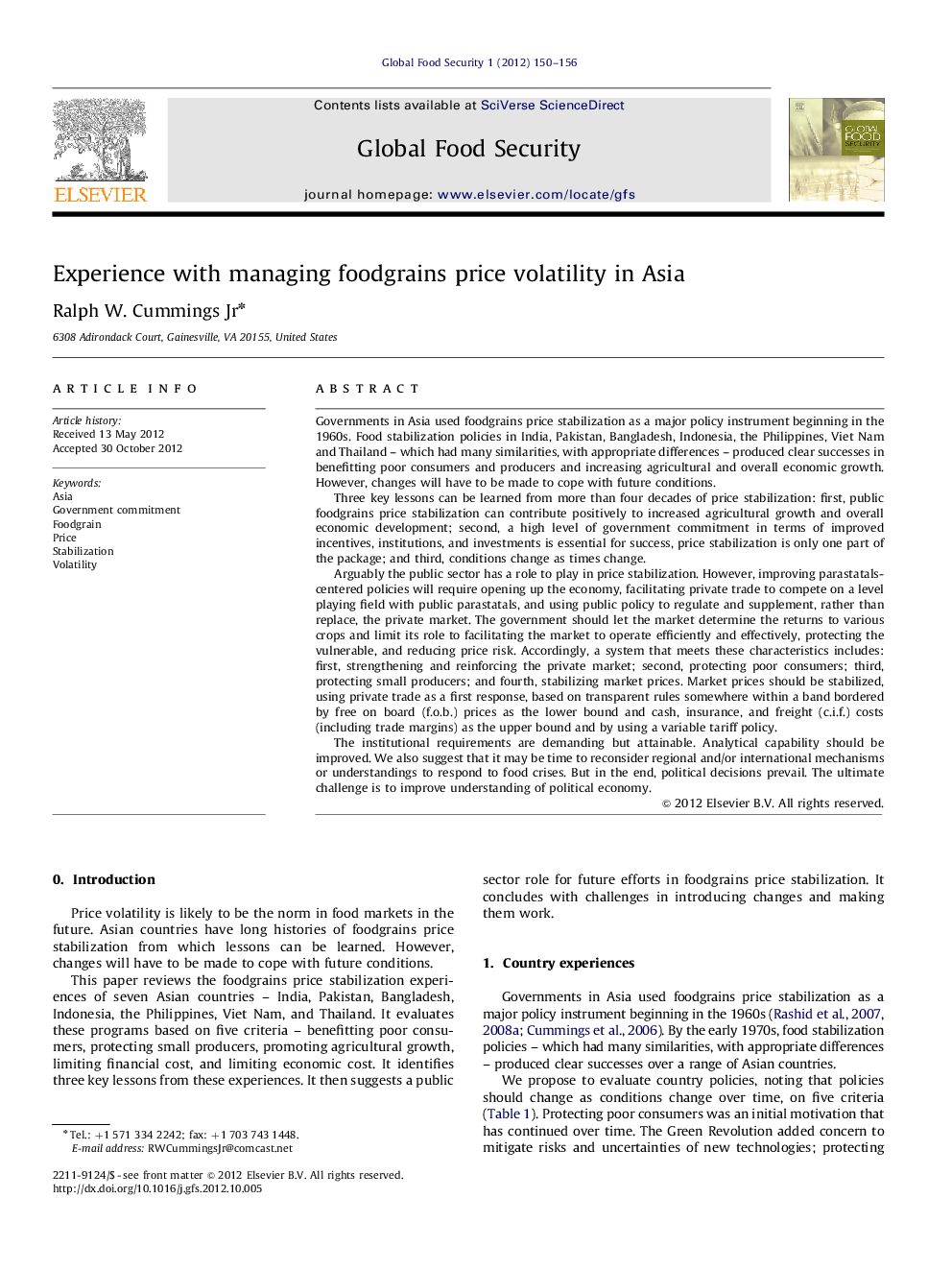| Article ID | Journal | Published Year | Pages | File Type |
|---|---|---|---|---|
| 1047598 | Global Food Security | 2012 | 7 Pages |
Governments in Asia used foodgrains price stabilization as a major policy instrument beginning in the 1960s. Food stabilization policies in India, Pakistan, Bangladesh, Indonesia, the Philippines, Viet Nam and Thailand – which had many similarities, with appropriate differences – produced clear successes in benefitting poor consumers and producers and increasing agricultural and overall economic growth. However, changes will have to be made to cope with future conditions.Three key lessons can be learned from more than four decades of price stabilization: first, public foodgrains price stabilization can contribute positively to increased agricultural growth and overall economic development; second, a high level of government commitment in terms of improved incentives, institutions, and investments is essential for success, price stabilization is only one part of the package; and third, conditions change as times change.Arguably the public sector has a role to play in price stabilization. However, improving parastatals-centered policies will require opening up the economy, facilitating private trade to compete on a level playing field with public parastatals, and using public policy to regulate and supplement, rather than replace, the private market. The government should let the market determine the returns to various crops and limit its role to facilitating the market to operate efficiently and effectively, protecting the vulnerable, and reducing price risk. Accordingly, a system that meets these characteristics includes: first, strengthening and reinforcing the private market; second, protecting poor consumers; third, protecting small producers; and fourth, stabilizing market prices. Market prices should be stabilized, using private trade as a first response, based on transparent rules somewhere within a band bordered by free on board (f.o.b.) prices as the lower bound and cash, insurance, and freight (c.i.f.) costs (including trade margins) as the upper bound and by using a variable tariff policy.The institutional requirements are demanding but attainable. Analytical capability should be improved. We also suggest that it may be time to reconsider regional and/or international mechanisms or understandings to respond to food crises. But in the end, political decisions prevail. The ultimate challenge is to improve understanding of political economy.
